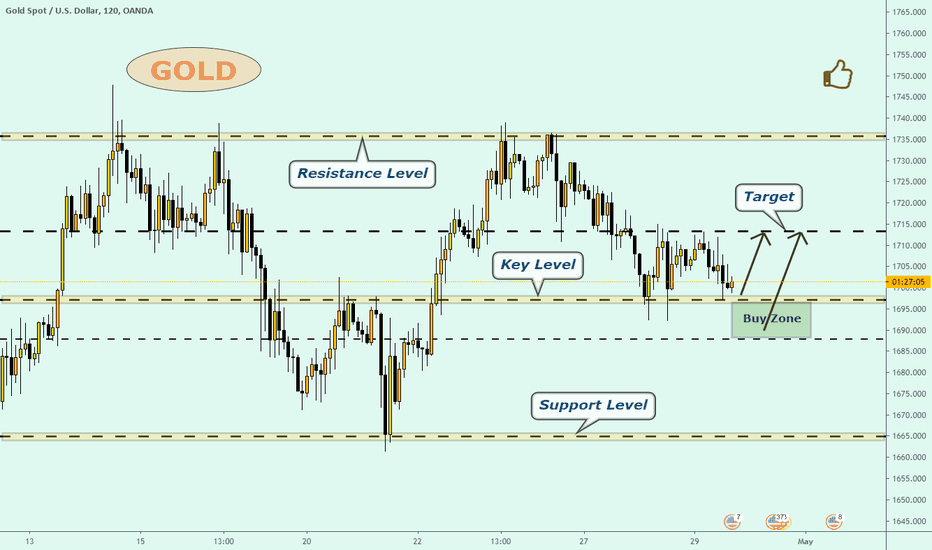Contents:


This is largely because big mergers have the power to impact the overall market, possibly leading to monopolies and other things that are bad for business. Unlike horizontal mergers, vertical ones aim to capture more of the means of production than expanding their market cap by merging with competitors or innovators in their niche. When it comes to mergers and acquisitions – commonly called M&A – the whole process can be quite confusing and stressful.
Esperovax and Ginkgo Bioworks Announce Partnership to Develop … – PR Newswire
Esperovax and Ginkgo Bioworks Announce Partnership to Develop ….
Posted: Thu, 05 Jan 2023 08:00:00 GMT [source]
Do you think that one day you could be working on the Internet with software made by Moogle, due to a merger between Microsoft and Google? The Clayton Antitrust Act allows the government to prohibit any anti-competitive mergers. An example of the power of the Clayton Act can be found in 1996 when Staples and Office Depot agreed to merge, but the FTC blocked the merger, invoking antitrust issues.
Horizontal Merger Example
To cite an example, we can say that the two companies are both producing laptops. Still, the target company has a specialty in producing gaming laptops, so the target-seeking company to increase its line of products and customer bases by either acquiring or merging with the target company. Four types of mergers and acquisitions exist Horizontal, Vertical, Concentric, and Conglomerate M&A. In each case, two companies come together to form a single entity.
The weird thing is that mergers are far more complicated than that just two companies deciding to come together. With any sort of a huge business move, there are different categories that mergers can fall into. For more information on our complete range of off-market sellers and businesses looking to merge, don’t hesitate to get in touch today. Discover more about the various M&A Strategy types with Chelsea Corporate today.
Your expansion goals, industry, workplace culture, and other factors will determine the right M&A structure for your transaction. Let’s take a look at the definition, advantages, disadvantages, and real-world examples of each. Kison Patel is the Founder and CEO of DealRoom, a Chicago-based diligence management software that uses Agile principles to innovate and modernize the finance industry. As a former M&A advisor with over a decade of experience, Kison developed DealRoom after seeing first hand a number of deep-seated, industry-wide structural issues and inefficiencies.
Market-Extension Mergers
Horizontal merger – An example of a horizontal merger is the merger of Facebook and Instagram that took place in 2012. Honeywell & Elster merger – this 5.1 billion dollar conglomerate merger in 2016 was attractive to Honeywell (which has a very active M&A portfolio) due to the fact Elster would lead to product and geographical growth. So in the nature of a concentric merger, their products were more complementary than competing. A conglomerate merger is the merger between two unrelated companies; diversification is often the main goal behind this merger.
This concept has been followed successfully for the revival of the sick industries. A merger is said to be vertical in nature if it involves merging of two firms which are at different stages of the manufacturing operation. This merger is basically executed so as to ensure smooth supply of raw materials to the acquiring firm. This means the main product manufacturing company can directly source the main ingredients from the merged company without bothering for the other supply chain company.
But the concentric merger example a company is, the less flexibility it has and the more scrutiny it must endure. In some markets, a horizontal merger can result in a monopoly, wherein a few players dominate an industry. Monopolies often result in price-fixing, low-quality products, and a lack of innovation.
The Concentric Merger
The merging companies typically develop similar products but in different industries. They likely have complementary products that appeal to the same customer base. During this integration, a product from one company is added to the existing product line of another company, and the companies become one under the product extension. A merger refers to an agreement in which two companies join together to form one company.
- They primarily believe this happens when larger firms acquire smaller firms, which allows larger firms to acquire more market power as they “gobble up” and consolidate certain industries.
- A horizontal merger is when two companies who sell the same product or cater to the same demographic come together to increase their reach.
- Through a concentric M&A, companies benefit from cost reductions as they share operational efficiencies and resources.
- A congeneric merger is a type of merger where two companies are in the same or related industries or markets but do not offer the same products.
- Unlike horizontal mergers, vertical ones aim to capture more of the means of production than expanding their market cap by merging with competitors or innovators in their niche.
Citi & Travelers – This merger between Citicorp and Travelers from the late ‘90s is often the prime example of a concentric merger. At the time of the deal, the headlines sang of a “record deal,” and it received a great deal of attention. While the deal has received a great amount of criticism, it certainly set out to accomplish the aforementioned goals of concentric mergers. Although mergers and acquisitions are costly endeavors, they can yield significant benefits. Developing a new corporate culture is not predicated on dissolving pre-existing cultures. Rather, a successful merger of cultures involves a consensus on operating processes, values, and principles that promote the success of the firm and its stakeholders.
But as this article shows, that transaction can have many different forms and underlying motivations. Both terms merger and acquisition have become a ‘catch-all ’expressions for a diverse range of transactions. During a congeneric merger, you need to take care of every legal matter possible. Talk with an experienced attorney that knows how to handle a merger, and also keep your accountant close. Moreover, you need to determine how valuable the company’s shares are on the market. Think about what type of company would work best with yours after the merger occurs.
Conglomerates look to diversify their company by owning multiple unrelated products or businesses. This diversification is part of an overall risk management strategy that may help the company survive market downturns or fluctuations. A concentric merger is a merger in which two companies from the same industry come together to offer an extended range of products or services to customers. These companies often share similar technology, marketing, and distribution channels, and look to the concentric merger to create synergies. A concentric merger is a combination of businesses that have complementary products, services or technologies. These types of mergers usually take place when two companies in the same industry come together to join forces and create a more powerful entity than either could alone.
3G Capital acquired most of Burger King’s stock and turned it into a private company before restructuring it. 3G Capital then merged Burger King with the British firm Justice Holdings Limited to create Burger King Worldwide before making it a publicly traded company on the NYSE yet again. Through a concentric M&A, companies benefit from cost reductions as they share operational efficiencies and resources.
The market extension merger creates value primarily through revenue synergies. There may also be some technology synergies that can be shared within the countries. Cost synergies tend to be lower here, as companies will retain most of the operations in each country even after the merger occurs. In 1998, the banking giant Citicorp acquired the Traveler’s Group, a company offering financial services. Both companies were part of the financial industries but had a different product line. Their merger into Citicorp Inc. allowed them to expand their reach into the market.
Most horizontal mergers consist of two similar companies within the same industry, which eliminates overall competition. An example of a traditional horizontal merger would be when Exxon and Mobil companies combined to create ExxonMobil, a gas and oil company. In general, horizontal mergers are usually investigated in great detail by the Federal Trade Commission and the Department of Justice to ensure that there will not be a monopoly.
Mergers and acquisitions (M&A) are commonly used to produce synergies that make the merged firm worth more than the two enterprises separately. Cost synergies are achieved through economies of scale, whereas revenue synergies are achieved through cross-selling, expanding market share, or boosting prices. A vertical merger is similar to a horizontal merger, except that the companies are at different phases of production. A vertical merger would occur, for example, if a car manufacturer purchased a company that supplied seat belts for the cars. Both businesses are in the same industry, but they are at different stages of the manufacturing process. A congeneric merger is where the acquiring company and the target company do not offer the same products but are in a related industry or market.
However, if a conglomerate becomes too large from acquisitions, the firm’s performance can suffer. During the 1960s and 1970s, conglomerate mergers were popular and most plentiful. The second type of merger is called a vertical merger, and it is when two companies combine that are in different stages of the supply chain. A supply chain refers to the process of production, sales, or distribution. A recent example of a vertical merger would be between Live Nation and Ticketmaster.
Ginkgo Bioworks and the Public Health Center of the Ukraine … – PR Newswire
Ginkgo Bioworks and the Public Health Center of the Ukraine ….
Posted: Tue, 17 Jan 2023 08:00:00 GMT [source]
However, the ultimate aim is always for the private company to take control of the newly merged company and for it to be publicly listed. This type of merger and acquisition also increases cost efficiency since repeated and non-productive activities are eliminated from production. A study of types of mergers and acquisitions with examples in business will help in understanding the concept.
- Also, it helps the company to diversify its offerings and thus generate higher returns.
- When it comes to mergers and acquisitions – commonly called M&A – the whole process can be quite confusing and stressful.
- The conglomerate acquisition occurs when a large company has grown through a series of bolt-on acquisitions, usually with a diverse range of product and service lines, geographies, and industry outlooks.
- To give an example, if Facebook were to be bought by Apple, you can say that it was a congeneric merger.
To come up with the answer to that, you might want to think about why you want to go through the merger in the first place. Here is how you can do a congeneric merger, from the beginning to the end. With that in mind, the merger process between two companies is one that has to be thoroughly analyzed, particularly if you do not want to drag the “mother” company into a pit. Congeneric mergers can be a good strategy to use, particularly if the two companies have the same interest. Conglomerate Merger – An example of a conglomerate merger is the merger of Berkshire Hathaway and Precision Castparts merger in 2015.

Theconglomerate acquisitionoccurs when a large company has grown through a series of bolt-on acquisitions, usually with a diverse range of product and service lines, geographies, and industry outlooks. For example, the merger between Mobilink Telecom Inc. and Broadcom is a product-extension merger. The two companies both operate in the electronics industry and the resulting merger allowed the companies to combine technologies. The merger enabled the combination of Mobilink’s 2G and 2.5G technologies with Broadcom’s 802.11, Bluetooth, and DSP products. Therefore, the two companies are able to sell products that complement each other.